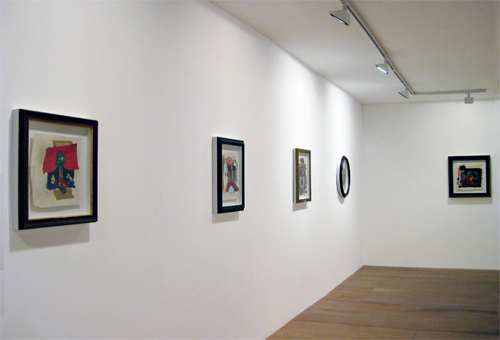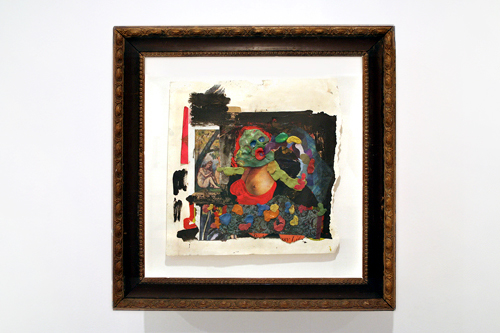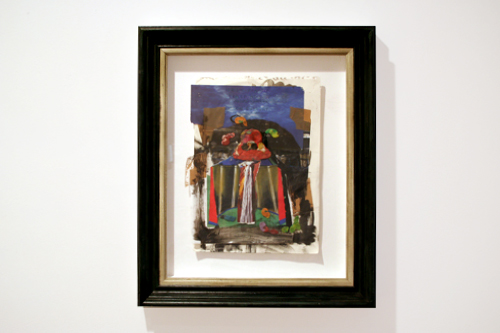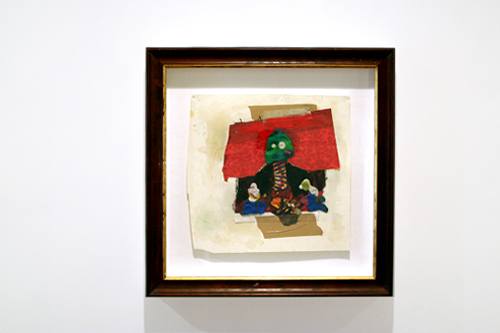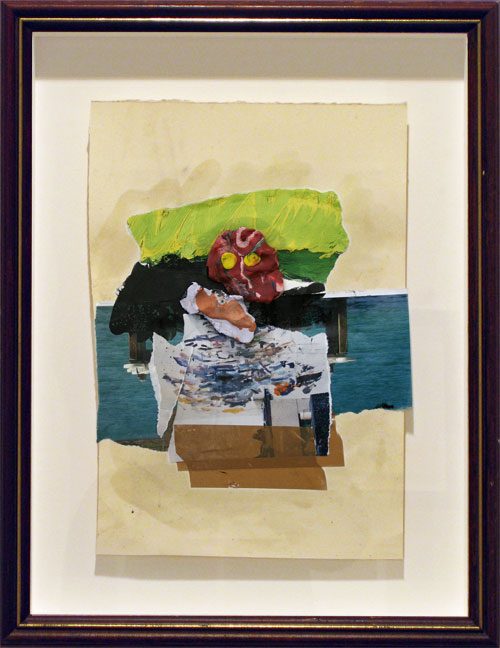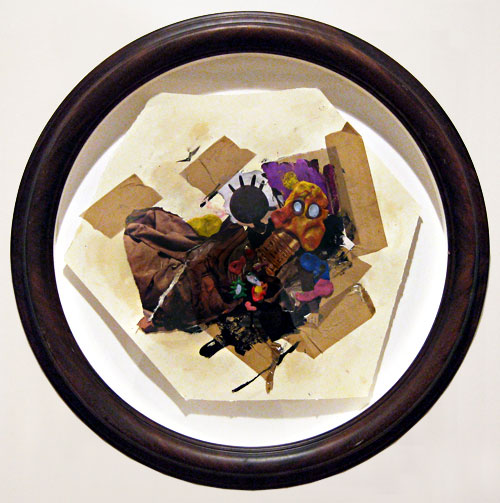London
E2 9DG
E: office@goodengallery.com
Paul Cole's latest pieces began in an unassuming way; the artist saw them as sketches or 'notes to self' for other work not yet made; a mind mapping or brainstorming process that would lead to something else. Ripped pages from art magazines were pasted onto paper to create environments for shapeless, yet strangely, characterful plasticine figures. Curiosity drove the need for expedience and inevitably their making required an approach less open-ended and more about 'tuning in' to what was happening and making cumulative decisions. These pieces moved from being provisional undertakings to pieces in their own right.
Made in the spirit of exploration and curiosity, rogue fingerprints, smudges of ink and blobs of paint are resident throughout. Evidence of a messy process is in distinct contrast with the way this work is presented. Placing it carefully behind glass and framing it is a considered act. It accords status and marks the work out as something to be protected and valued. On the one hand the frames are related to the other items that comprise the work in that they belong to the world, they are also secondhand / recycled like the scraps of paper that have been used to build up the backgrounds. On the other hand they point out a boundary of existence, enclosing the work in a bubble, in its own world very separate from ours.
This work underscores the inherent indeterminate qualities of collage and assemblage. It delights in the inevitable contradictions raised by the use of items from the real world and the illusory effects that result from their appropriation. Figure / ground relationships are determined by different materials; plasticine is used sculpturally, to create the figures and in terms of the environments they inhabit, every pasted item becomes meaningful only in so far as it doesn't disclose the unique meaning of its original manifestation (pages from art magazines).
Original meaning has to be lost for new meaning to be perceived; and although the perception of new meaning could be described as a subjective affair, that subjectivity is abridged by the common ways of seeing and interpreting space within a frame that we are all (including the artist) familiar with. It seems reasonable to assume that we may all arrive at similar, or at least approximately similar conclusions.
The rare exception to this is when we might suddenly become aware that something from a different order exists within the work, when a colour, or a series of colours, textures or shapes that form part of the background spark memories of something else we may have seen before; and the unique meaning from the materials' original manifestation (pages from art magazines) is partially recovered.
